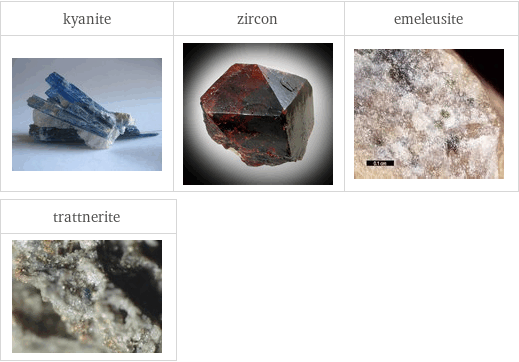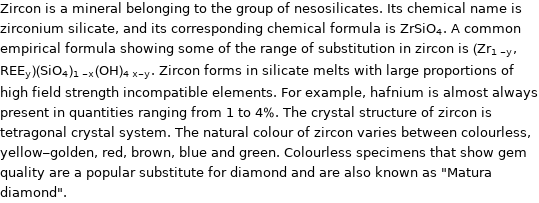Input interpretation

kyanite (mineral) | zircon (mineral) | emeleusite (mineral) | trattnerite (mineral)
Images

Images
Wikipedia summary
Kyanite

Kyanite is typically a blue aluminosilicate mineral, usually found in aluminium-rich metamorphic pegmatites and/or sedimentary rock. Kyanite in metamorphic rocks generally indicates pressures higher than four kilobars. It is commonly found in quartz. Although potentially stable at lower pressure and low temperature, the activity of water is usually high enough under such conditions that it is replaced by hydrous aluminosilicates such as muscovite, pyrophyllite, or kaolinite. Kyanite is also known as disthene, rhaeticite and cyanite.
Zircon

Zircon is a mineral belonging to the group of nesosilicates. Its chemical name is zirconium silicate, and its corresponding chemical formula is ZrSiO_4. A common empirical formula showing some of the range of substitution in zircon is (Zr_(1-y), REE_y)(SiO_4)_(1-x)(OH)_(4x-y). Zircon forms in silicate melts with large proportions of high field strength incompatible elements. For example, hafnium is almost always present in quantities ranging from 1 to 4%. The crystal structure of zircon is tetragonal crystal system. The natural colour of zircon varies between colourless, yellow-golden, red, brown, blue and green. Colourless specimens that show gem quality are a popular substitute for diamond and are also known as "Matura diamond".